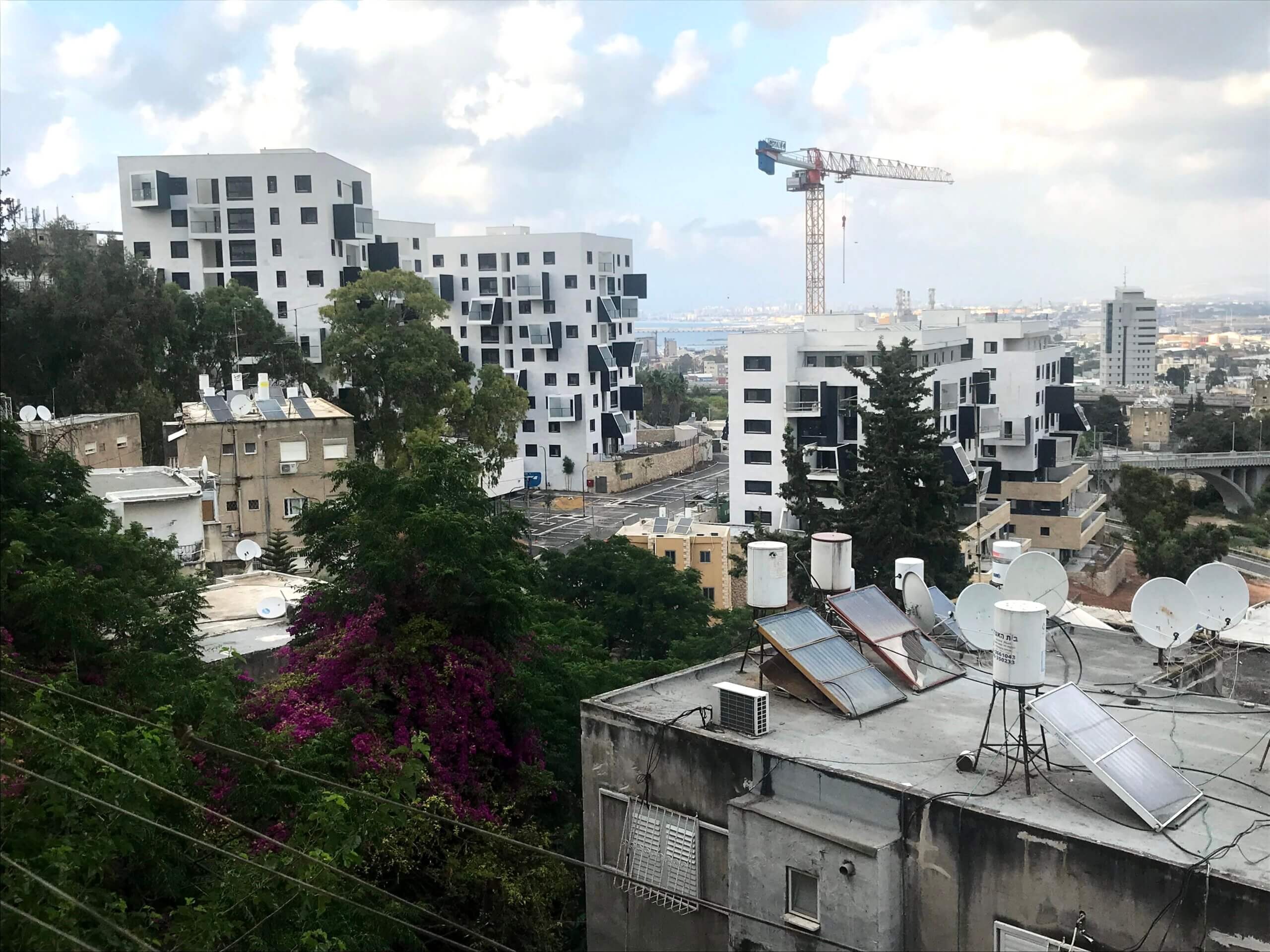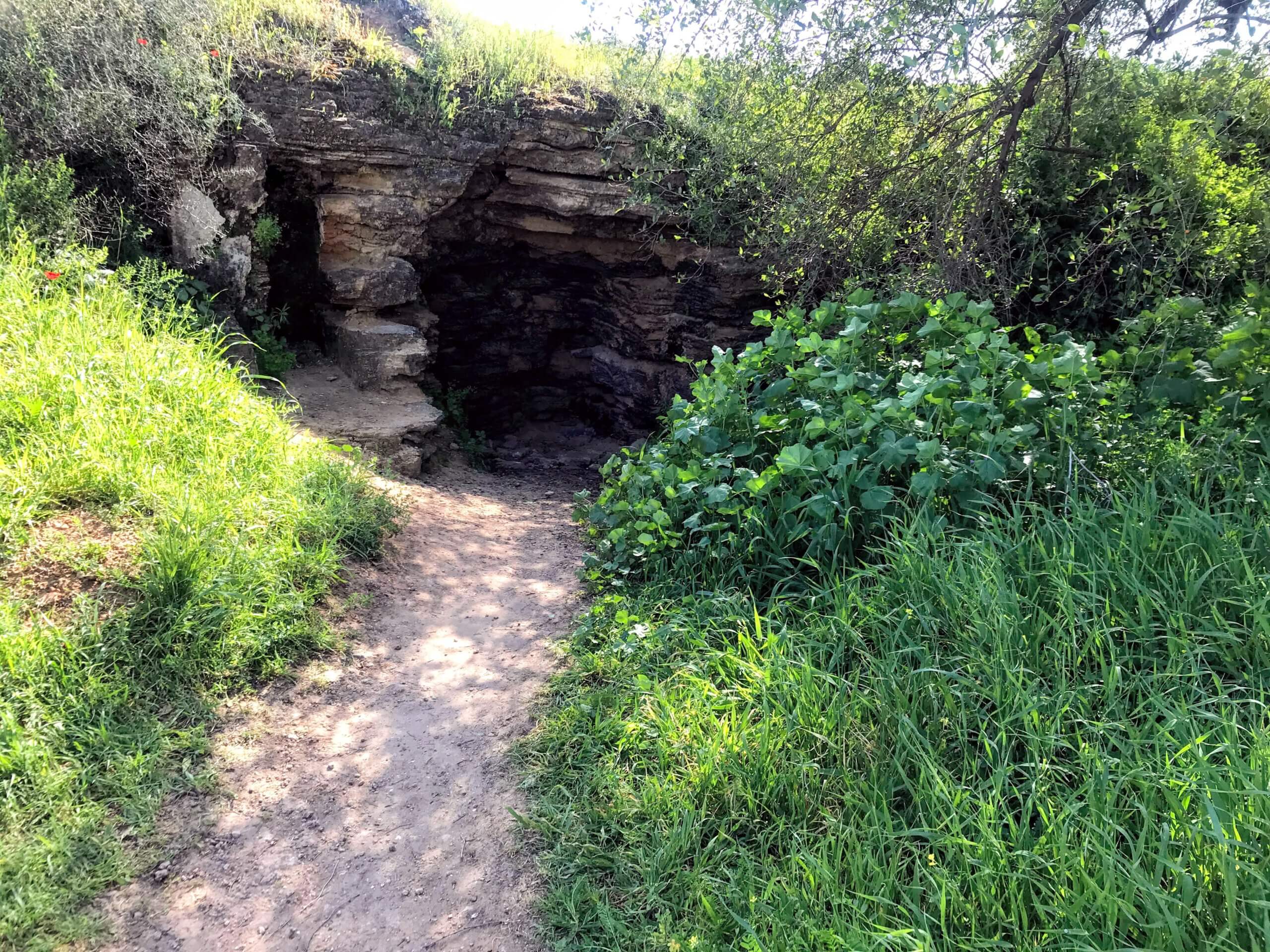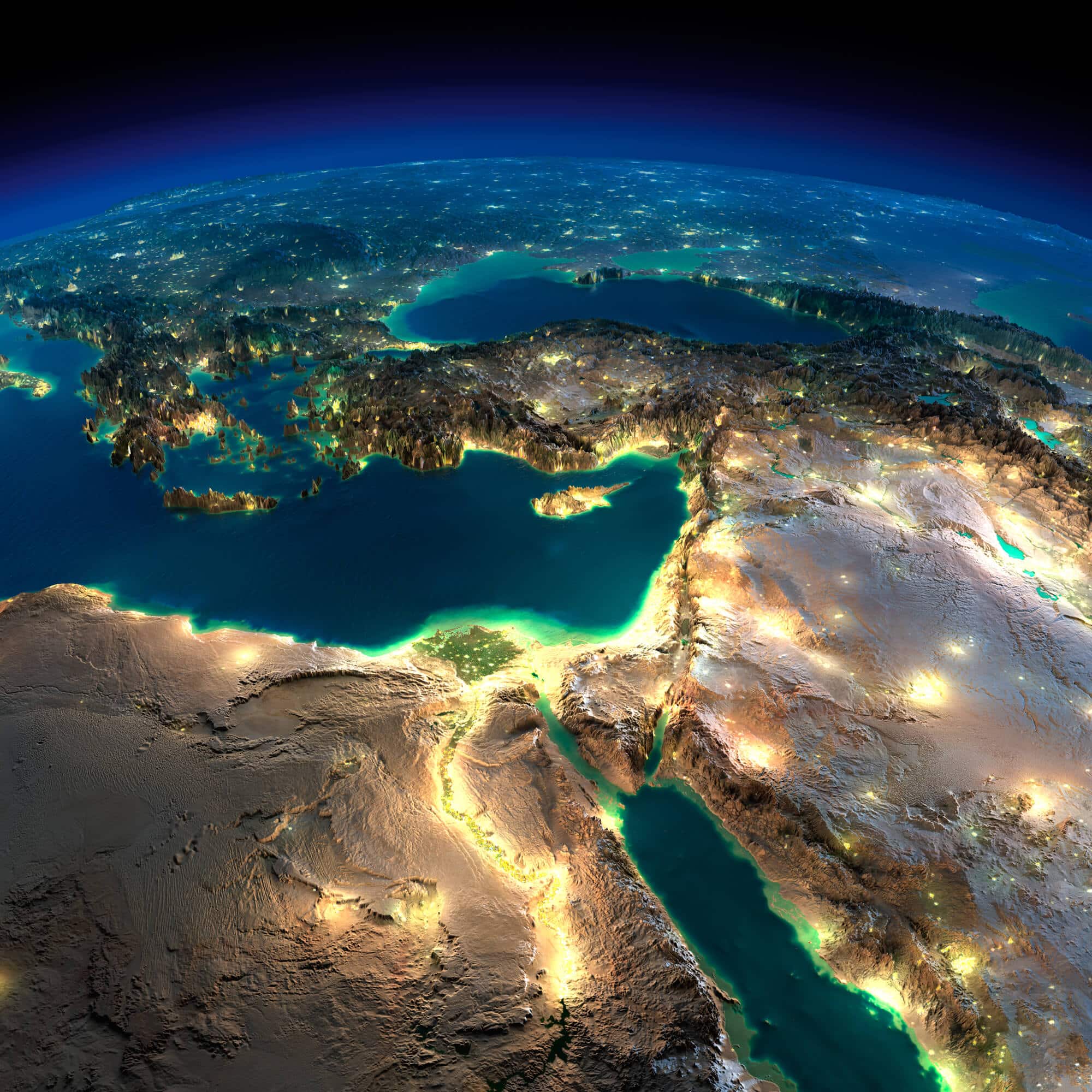The State of Nature Report 2022, Volume Trends and Threats, presents a snapshot of key factors and processes that affect the state of nature in Israel as a result of human activity. The Web is the national program for assessing the state of nature of the Steinhardt Museum of Nature, the Ministry of Environmental Protection, KKL-Junk and RTG

In the report, which was published at the end of the week (Thursday), the results of the research are presented in the seven areas of monitoring:
1. Changes in land use (such as construction and agriculture); 2. Analysis of temporal and spatial trends in vegetation cover; 3. Mapping and segmentation of fires and their frequency; 4. Changes in measures of continuity and fragmentation of open spaces; 5. Mapping and analyzing the protection levels of the natural and forested areas; 6. Spatial analysis of the intensity of artificial night lighting and its effect on the ecosystems; 7. A comprehensive review of the impact of climate change on biodiversity.
Minister of Environmental Protection, Tamar Zandberg: "State of nature reports are a significant part, and should become more significant, in the formulation of an environmental policy in Israel, a policy that is based on current and detailed data on the state of nature and its concrete needs. I am happy that this year for the first time there is a chapter dedicated to the impact of climate change on nature. Only detailed information, by regions, species and habitats, will allow us to adapt our nature conservation policies to the changing world and increasing challenges. The findings of the report are alarming, and put a special spotlight on the reduction of open spaces in Israel and damage to their continuity. This is one of the main reasons that we at the Ministry of Environmental Protection oppose the promotion of new settlements and work to optimize the use of land in Israel"
According to Prof. Tamar Dayan, Chairman of the Steinhardt Museum of Nature: The "State of Nature Reports" of the Marg, the national program for assessing the state of nature, constitute a scientific knowledge base for making decisions for the management of open spaces and ecosystems in Israel. The report presents the monitoring findings of the fabric and these identify and present the impact of man and his actions on the entire biological diversity and the ecosystem, the natural support network essential to man. Through the report, we receive an up-to-date and reliable picture of the trends in the changes that apply in our environment, the main processes that are taking place and the factors that threaten the state of nature in Israel in the near and long term, where the main goal is to form a reliable and responsible knowledge and research base for making planning and management decisions based on science and knowledge. Thanks to the report, the regulator and the bodies that manage the open spaces can make informed decisions and manage Israel's open spaces while understanding the consequences for biodiversity and human well-being. The next report on the state of nature of the fabric is planned to be published in 2023, and it will also deal with biological diversity"
Dr. Yehoshua Shakdi, Chief Scientist of the Nature and Parks Authority: "The State of Nature report is a snapshot of the many challenges we must face in order to preserve the habitats and the ecological fabric in the State of Israel. Only in the last year have major efforts been made to deal with poisonings in open areas, such as surveillance of birds of prey and enforcement in the field, but to be more successful requires much stricter regulation and close supervision of the use of poisons in open areas and sterile cleaning of the meat waste, from which wildlife is harmed. The entry of invasive species into the territories of the country requires legislation on the subject, and as soon as an invasive species is discovered, action must be taken to exterminate it and prevent its spread in the environment. The state must create a national plan to preserve biological diversity, protect nature reserves and implement conservation principles and policies in all government ministries and in the business sector as well. The web project requires the cooperation of many parties and a greater involvement in the protection of nature, with the aim of producing an operative plan for every body that has a bearing on these issues in order to act jointly in the face of the challenges to preserving Israeli nature. Only in this way can we ensure a long-term existence for the wonderful Israeli nature and preserve it for future generations"
Avraham Dovdevani, chairman of the National Fund for Israel: "The activity of the organization is very important and KKL-Junk is a key partner in it. The public in Israel shows a growing interest in the state of nature and enjoys spending time in nature more and more. The annual report that the organization publishes on the state of nature is a research tool for professionals and a useful tool for nature lovers"
The main points of the report:

• The rate of loss of open spaces in Israel continues to be high and stands at about 30 square kilometers per year.
• The average intensity of artificial night lighting in the territory of Israel has increased by 30% in the last decade.
• For the first time, a threshold value was defined for ecological light pollution. The use of the threshold values makes it possible to identify and characterize areas where the ecosystems are exposed to artificial lighting of an intensity that damages them. The report shows that 67% of Israel's territories north of Beer Sheva are exposed to light pollution to a degree that harms ecological systems and biodiversity.
• 78% of the coastal strip in Israel is exposed to high light pollution.
• About 500 square kilometers (about 15%) of the natural and forested areas in the Mediterranean region of Israel burned at least once between 2015-2021.
• About 26% of Israel's territory is defined as nature reserves and national parks.
• Most of the areas where the frequency of fires is high are within IDF training areas.
• Between the years 2021-2017, the area of nature reserves and national parks increased by 9.6%.
• The rate of land and sea warming in Israel is faster than the world average.
• Israel is a global distribution border for many plant and animal species. Populations at the border of distribution tend to be particularly vulnerable to environmental changes, including climate change, and some of these populations are in danger of extinction in Israel.
Additional insights from the report:
Chapter 1 - Land Uses in Israel (Taksit)
• The rate of destruction of open spaces (natural, wooded and agricultural spaces) in Israel continues to be high. Between the years 2017-2020, an average of 30 square kilometers per year were cut down for development purposes.
• During these years, approximately 72 square kilometers of natural and wooded areas were converted to different land uses (an average of 18 square kilometers per year). 32 square kilometers were converted to built-up areas, 22 square kilometers were converted to agriculture, and the rest for other uses such as transportation, quarries and solar fields.
• In these years, about 69 square kilometers of agricultural areas were converted for different land uses (an average of about 17 square kilometers per year without the addition of agricultural areas from conversions of natural areas): about 66% of them were converted for construction (not for agricultural use), and the rest for uses More, the main ones being transportation (21%) and solar fields (9%).
• Even in the ecological units that are underrepresented in the system of protected areas in Israel, the erosion of the natural area continues: the sands of the coastal plain, for example, lost about 2% of their area between 2017-2020.
Chapter 2 - Vegetation coverage and vegetation formations in Israel
• In recent decades, the vegetation cover in the Mediterranean region in Israel has been increasing in all natural areas due to the recovery of the vegetation after years of grazing and felling and due to the maturing of the planted forests and the stunted vegetation.
• The rate of increase in vegetation cover in the more rainy areas of the Mediterranean is higher than in the less rainy areas.
• In the desert areas, the coverage has not changed significantly in the last decades, and there is a correlation between the vegetation coverage and the annual amount of precipitation.
• In the planted forests in the east of the country and in the south (Biria, the Gilboa, the north of the Negev) a decrease in the vegetation cover was found after a succession of years that were planted. However, even in these forests, the dominant trend over the years is an increase in vegetation cover.
• In the sands of the coastal plain, the rate of increase in plant cover is particularly high due to a rapid process of stabilization of the sands, which is caused, among other things, by the spread of invasive species, especially blue-green acacia and the sands.
Chapter 3 - Fires in the natural and forested areas in Israel
• The frequency of fires in Israel is on the rise due to the increase in vegetation cover and population density and due to climate change.
• Frequent fires significantly damage ecosystems and make it difficult to restore them.
• Most of the areas where the frequency of fires is high are in and near IDF training areas, especially in the Golan Heights, in the Lakish region and in the "hill axis" in the Shipoli of Samaria.
• About 500 square kilometers (about 15%) of the natural and forested areas in the Mediterranean region of Israel burned at least once between 2015-2021.
• About a quarter of the areas of grassy houses in Israel have been burned in the last seven years.
• The areas of the Mediterranean forest burned less than the other vegetation formations in relation to their total area and in relation to their relative area in the field of fire areas.
Chapter 4 - Management of the natural and forested areas in Israel and their protection
• In December 2021, the scope of the areas protected as declared and approved nature reserves and national parks was about 26.1% of Israel's territory - a 9.6% increase in their territory in the last four years.
• About half of the natural and forested areas in Israel (non-agricultural open areas) are areas managed by the Nature and Parks Authority or forest areas under the responsibility of KKL-Junk.
• About half of the nature reserves in Israel and about an eighth of the forest areas managed by KKL-Junk are within active fire areas.
• In the last three years, marine nature reserves were declared for the first time in large areas in Israel, and today about 4% of the surface of the sovereign waters are defined as nature reserves.
• In some ecological units in Israel, less than 30% of the area is defined as a protected area, and sometimes even less than 10% of it is defined as such. One of the goals set by the Ministry of Environmental Protection is to protect at least 30% of the area of the units. Among the ecological units that suffer from a lack of protection: the northern Jordan (Gaon Jordan), the Kurkar and the sands of the coastal plain, the coastal salt marshes, the lowlands, the loess plains, alluvial valleys, the Mediterranean Sea and the Gulf of Eilat, the Kinneret, the Dead Sea and its beaches.
Chapter 5 - Continuity and discontinuity in open areas in Israel
• The accelerated development is notable for its effect on the fragmentation model of the open spaces in Israel - in the north and center of the country, the open spaces are divided into small and fragmented units, while in the south of Israel, most of the open spaces are extensive and relatively continuous.
• The extent of the area that is less than one kilometer from the nearest road in Israel is 12,113 square kilometers (55% of the country's area): North of Beer Sheva, 83% of the area is less than one kilometer from the nearest road, compared to 29% of the area to the south to Be'er Sheva.
• In the Golan Heights is the highest sequence of open and natural areas in the Mediterranean region in Israel
• The fragmentation model indicates that the marginal effects are the highest in the planted forests, in the sands of the coastal plain, in the loess plains and in the Mediterranean forest.
Chapter 6 - Light pollution in Israel - ecological and spatial aspects

• Light pollution is a threat to ecosystems that so far has not been monitored at the national level.
• In the current report, a threshold value for ecological light pollution (which differs from astronomical light pollution) was defined for the first time. The use of the threshold values makes it possible to identify and characterize areas where the ecosystems are exposed to artificial lighting of an intensity that damages them.
• The average intensity of artificial night lighting in the territory of Israel has increased by 30% in the last decade.
• 67% of Israel's territories north of Beer Sheva are exposed to light pollution to a degree that harms ecological systems and biological diversity.
• Light pollution seeps into the open spaces in Israel, including nature reserves and KKL-JV forests. 30% of KKL-Junk forests and 16% of nature reserves north of Beer Sheva are regularly exposed to light pollution.
• 78% of the coastal strip in Israel is exposed to high light pollution.
• In Eilat, coastal light pollution threatens the future of the coral reef.
• The gas infrastructures in the Mediterranean are a new source of light pollution in Israel's maritime space, which was dark until about a decade ago.
Chapter 7 - Climate change and its impact on biodiversity
• In this report, the expected effects of climate change on biological diversity in Israel were analyzed for the first time.
• In nature in the whole world and in Israel in particular, the damages of the climate crisis are already evident, and even more so in the sea compared to the land. In the Israeli Mediterranean Sea, for example, dozens of mollusk species have become extinct over the course of several decades, probably due to the warming of the sea water.
• Israel is warming faster than the world average, and is expected to become hotter.
• Following a decrease in the amount of precipitation and an increase in temperature and evaporation, significant damage to freshwater habitats - streams, springs and winter pools - is expected in Israel.
• Changes in the rainfall regime and an increase in temperature and evaporation are among the factors contributing to the increase in the frequency, intensity and area of wildfires in Israel.
• Israel is the limit of the distribution of many species, and the warming of the climate may cause their local extinction.
• Ectothermic species ("cold-blooded") and species with limited distribution capacity are expected to be more acutely affected by the climate crisis compared to other species.
• Due to the warming, migratory birds migrate earlier and are forced to shorten their stay times in the intermediate stops required to rest and eat.
• It is not always easy to distinguish the direct effects of climate change on nature, because they occur simultaneously with other processes originating from human activity, and whose effect is sometimes immediate or more significant in the short term. An example of this is the increase in vegetation cover in the Mediterranean region of Israel due to the reduction of grazing and logging in it, despite the gradual warming and drying in the region.
The report presents two major and opposite trends in the state of nature in Israel, explains Noam Ben Moshe, editor of the State of Nature report. On the one hand - the threats to nature in Israel are increasing. The increase in population density and the accompanying development mean that the rate of loss of open spaces and their fragmentation continues to be high, especially in the center of the country and in the north. The effects of man also flow into the protected areas, and are expressed, for example, in the increase in the frequency of fires and light pollution in nature reserves and forest areas. Another threat that is already beginning to show its signs in Israel's biological diversity is climate change. On the other hand, the nature conservation efforts over the years are also significant, and are manifested in a significant and continuous increase in the vegetation cover in the Mediterranean region of Israel and in a significant expansion of the nature reserve areas, including in the sea, which until a few years ago was hardly protected.
More of the topic in Hayadan:
- Will Israel be able to feed itself?
- The missing third / a million and a quarter of the residents of the territories are registered but not physically present
- The massacre in the newspaper system of Shirley Hebdo will cause fear like the beheading effect of ISIS
- NASA: Arctic Ocean ice may disappear by the end of the 21st century (update)
- They burn meat (and along the way also the forest)
